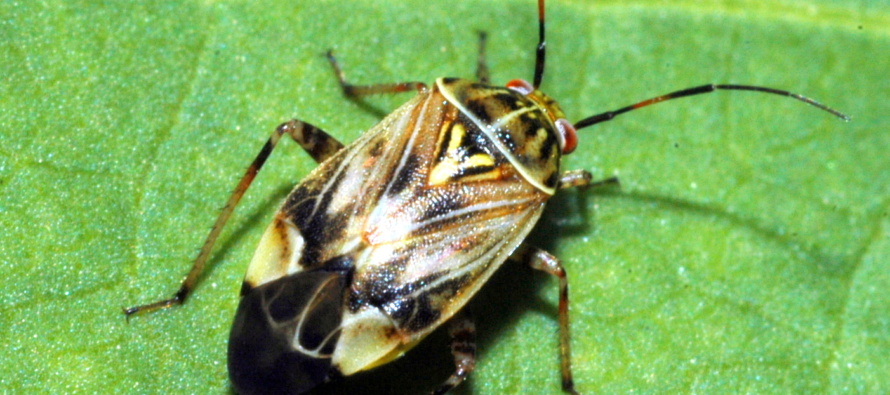2023 Tarnished Plant Bug Management and Rainfastness

Related Articles
- Calcium and Magnesium For Mississippi Crops 0
- March 11 Precision Agriculture Workshop 0
- Ground Speed Affects Spray Droplet Deposition 0
Latest Tweets
As tarnished plant bug population begin increasing across the state. It is important to remember some of the best management practices.
- Use diamond during late squaring and early flower when adults are migrating into cotton field.
- The highest yield increases have been shown when making applications at this time period.
- Minimize rank cotton and delayed maturity.
- Control early season pest
- Reduce nitrogen rates
- Delay irrigation as long as possible
- Use optimum application practices
- Nozzle type
- GPA
- Timeliness
- Rotate insecticides classes.
- We generally see the highest efficacy associated with Transform, Acephate plus Bifenthrin, or Diamond tankmix applications.
- Make sequential applications
- Use shorten intervals in heavy pressure situations. Increased control is seen with sequential applications made within 4-5 days of the first application.
- Stop making multiple applications late season targets at the top of the plant.
- Based on previous research, we know that we can alter the plant bug threshold late in the season when control is often decreased. However, we are still working on wide scale validation.
Over the last few weeks, most of the state has received a rainfall every few days making pest managing more difficult. With that comes questions around insecticide rainfastness. Rainfastness is a complex topic because there are several factors that impact control other than time. Below are some points to be mindful of:
Amount of rain: Any rain can have a negative impact on insecticides, but more rain will have a greater impact than less rain.
Intensity of rain: We don’t have a lot of information on rainfall intensity, but we can reasonably assume that a hard and fast rain would have more of an impact than a slow steady rain.
Activity of insecticide: Contact versus systemic (moves into the plant). Systemic insecticides are generally more rainfast than contact insecticides, because they don’t wash off once they have moved into the plant. On average, it takes two to four hours for this movement to occur. Some contact insecticides may not have any rainfastness, which may not matter depending on the crop and target pest.
Target Insect: Feeding location is especially important with contact insecticides. For insects that are enclosed in a plant structure (bollworm) or mobile insects (tarnished plant bug) migrating into the field, residual control is going to be important. When trying to control such pests in high rain environments, a contact insecticide like a pyrethroid or organophosphate may not be the best option due to the high probability of wash off. In other situations where the insect is exposed, a pyrethroid may serve as the best option because those insects will come into direct contact with a lethal dose almost immediately, providing control. After that point, wash off isn’t an issue.
Insecticide Concentration in the plant: Insecticide concentration within the plant will be situational, depending on the insecticide. The figures below are from Ms. Sara Barrett’s M.S. research were the highest concentrations of insecticide for Centric and Transform were detected with the no rainfall event. There is a general increase in insecticide concentration as the period between application and the rainfall event increased.
Unlike Centric and Transform where you see the gradual increase in insecticide concentration, Diamond seems to handle the early rainfall events better. With previous research, it is common to see more rainfastness with IGRs.
Tarnished Plant Bug Control: When evaluating TPB control 4 days after the Transform application, there is an increase in control as the time interval between application and rainfall event increases. Ideally, the longer the time between the application and the rain, the better.
General Guidelines: As a rule of thumb, effective insect control can be achieved if an application goes out between two and four hours before a rain. This does not mean that some control won’t be provided if a rainfall event occurs in less than two hours, but it is likely that retreatment will be necessary. Remember a major exception to this rule is Orthene or any acephate based product. Acephate is by far the least effective insecticide when rain occurs and needs a minimum of 8 to 12 hours before rainfall.








Let me tell You a sad story ! There are no comments yet, but You can be first one to comment this article.
Write a comment